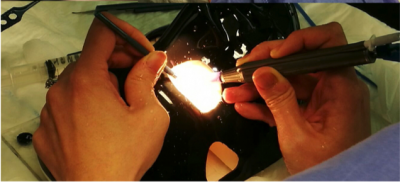Join a powerful, unprecedented alliance for better eye health for all.
Join IAPB-
Choose an alternate language here
For World Glaucoma Week, Wai Siene Ng on glaucoma in Wales… Wai Siene Ng is part of Allergan Foundation’s International Glaucoma Panel.
Wales is one of the four countries which together with England, Northern Ireland and Scotland form the United Kingdom. Health care is publicly funded in the form of the National Health Service (NHS) and is free at point of delivery. Eye care services begin in the community with optometrists offering free eye examinations to patients aged under 18 or over 60. Furthermore, this service extends to patients aged over 40 with a first degree relative with glaucoma and groups of the population with greater risk of glaucoma eg. afrocarribean or south asian ethnic groups. Yet, uptake of eye examinations are low [1] because of reasons such as acceptance of poor vision as part of ageing, a belief that sight tests are only needed if symptomatic with vision problems and the cost of spectacles with mistrust of optometrists as one of the many reasons quoted. Hence, patients with advanced glaucoma at first presentation still occurs, often from those with a lower socioeconomic status [2]. Patients need to be more aware of regular eye tests to detect the silent thief of sight, glaucoma.
With glaucoma becoming more common as patients get older, we have the task of identifying and treating the increasingly elderly population. Wales have the highest proportion of over-65s compared to the UK average which is predicted to rise to 25% by 2030. In an effort to counteract the increasing demand on the ophthalmic workforce, we have invested in electronic patient records which facilitates virtual glaucoma clinics; an acceptable format of reviewing patients with high satisfaction rates [3]. With the virtual platform in place, I look forward to future advances and implementation of artificial intelligence. This may help review large numbers of patients; separating patients with progressive unstable glaucoma who need urgent medical input from patients with stable glaucoma.

Overall, the delivery of glaucoma care faced with increasing pressure and limited resources will be challenging. However, with research underway into new drug delivery systems, artificial intelligence and novel at-home glaucoma monitoring systems, the answers for an efficient and efficacious glaucoma care might not lie too far. After all, necessity is the mother of invention.
References